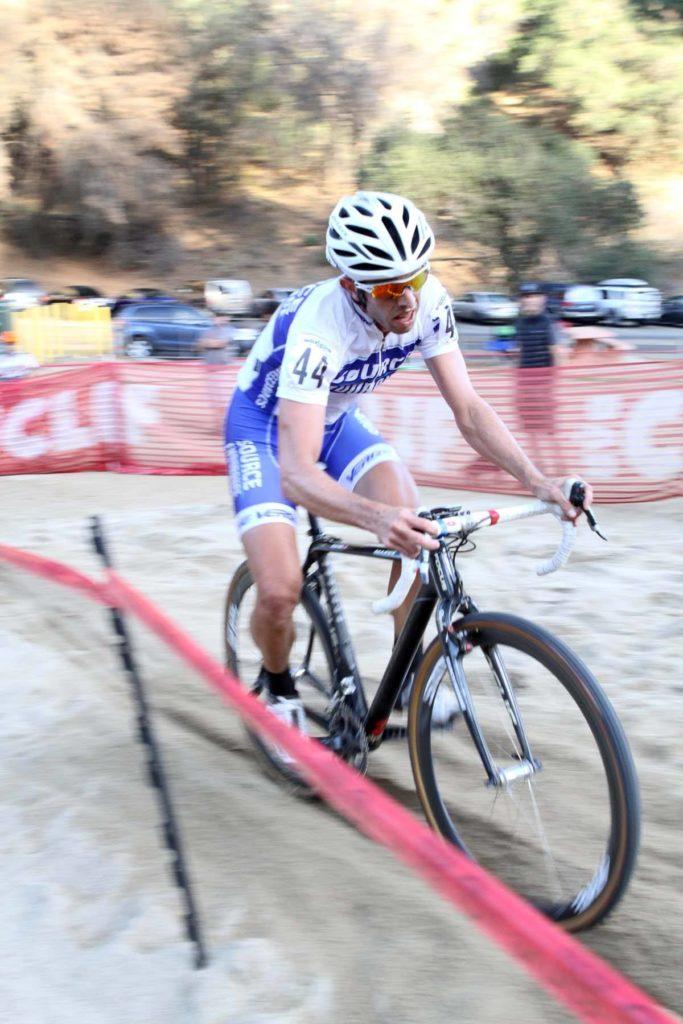Starting with Coaching for Cyclocross

As a coach, the first thing I do when I get a new client – the very first thing – is ask to look at any data that they have collected over the last couple of seasons.
If I get lucky – and I get lucky more often these days than I used to – they’ve not only got data, they’ve got power meter data, and they have it going back for several years.
Once I’ve got the data in hand, I then need to make sure that what I’m looking at is actually good, robust data… but that’s a topic for another day. For right now, suffice to say that there are good power meters, there are bad power meters, and that not nearly enough people know what calibration is.
Let’s assume that the data I’ve gotten from this new client is solid. What do I do next?
Check out this groovy chart…

This collection of squiggly lines is from a program called WKO4, which is a piece of software used to analyze and dissect training data in a myriad of useful ways. In this particular case, what we’re looking at is the maximum wattage output by this rider at every duration over the course of the past year via the Power Duration Model. The bottom chart is those outputs expressed in absolute wattage, and the top chart is how these numbers compare to top athletic performances in each of those time domains.
In each of those time domains is important to note. There are athletes that will top the chart at every point on these curves, but in the real world we do not see athletes topping the charts across the board. Ever. It simply does not happen.
The traits that make for an athlete who tops out in, for example, the 5 second time domain on the left hand side will preclude them from performing well at the longer efforts that are captured on the right hand side of the chart. This is the classic sprinter vs marathoner comparison that we’re all familiar with, captured in actual numbers.
To return to this specific chart, though, what we’re looking at here is the data from a fairly accomplished Master’s athlete who fits nicely into the “Time Trialist” profile; very good at sustained, hard efforts from 2 minutes up to about an hour in duration, with a pretty flat output curve through that time domain, and across domains, generally. There are some indications that there’s unrealized potential in the short efforts with this particular athlete – that little up-tick at the far left of the scale? If that’s not the result of bad data (and it isn’t, in this case) it’s… interesting.
Where do we go with this info? Well, bear in mind; there’s a lot more data to look at, and to draw from. This is just one chart, and it’s just the start of a long conversation that I’ll be having with this athlete, but the conversation will begin with “So, how do you feel about time trialing…”
“Oh.”
“You’re aiming at cyclocross?”
“Well, we can work with this.”
…and work with this we can. When I see a chart like the above, I see a rider that has a solid ability to perform at a high level for up to an hour, that intriguing little uptick at the left hand side of the chart… this is good stuff. There’s a lot to work with here, and a lot to work on here. That isn’t the key point, though.
As I go through the process of looking at data like this, I’m forming an understanding of what we’ve got to work with, and what we’ve got to work on as we compose a training program to develop this rider’s strengths – and weaknesses – in pursuit of their goals.
We start by looking at what the rider has done, and where they are at, and this tells us not only where we can likely get to, but how to get there.
There will be choices to make. Do we double down on the strengths – push those numbers out in the zones where the athlete is already “excellent” – or do we work to push them up in the short time domains where they’re not quite at the same level? Maybe a bit of both?
Again, there are choices to be made. Because we’ve actually looked at the data, though, when we make these choices they will be informed choices, not just guesses, and not just generic training routines that put all the round pegs and all the square pegs through the same round holes.
Square pegs, round pegs… that’s really what we’re getting at here.
Do you know which you are?
Whether you’re working with a coach, following a generic training plan you picked up online, or simply riding with your buddies hoping to get better, smart training begins with an honest assessment and understanding of your strengths and your weaknesses.
As they say, this bike racing thing , it’s a metaphor for life.
Source Endurance has also written about both anaerobic training and aerobic training’s role in cyclocross racing.

As a coach and trainer, Matthew’s client list includes multiple National Champions, a World Champion, and many successful local racers, fondo and recreational riders, and entry-level enthusiasts. At the 2015 Cyclocross National Championships, ¾ of his clients placed in the top ten of their respective events, with two reaching the podium, including 3rd place in the Elite Men’s category for long-time client Zach McDonald. Learn more about Matt.
